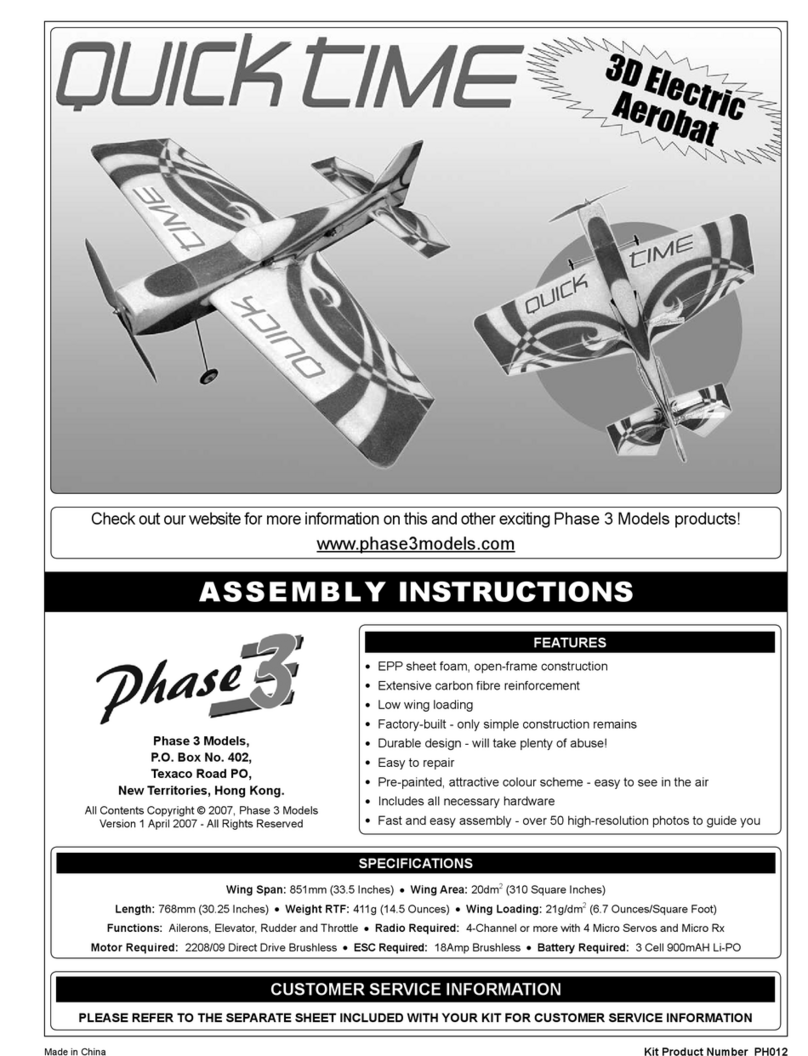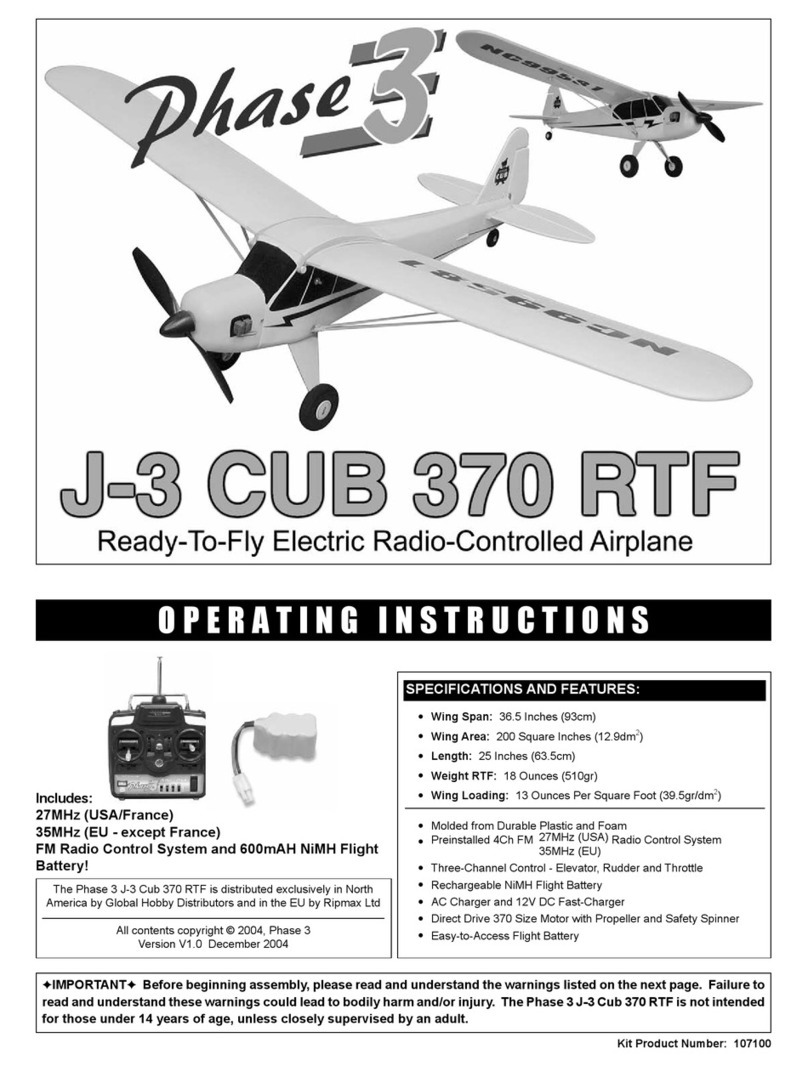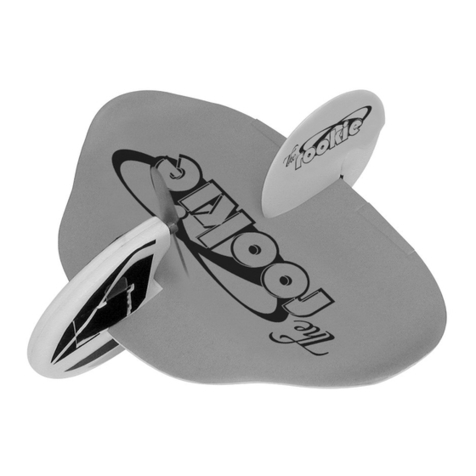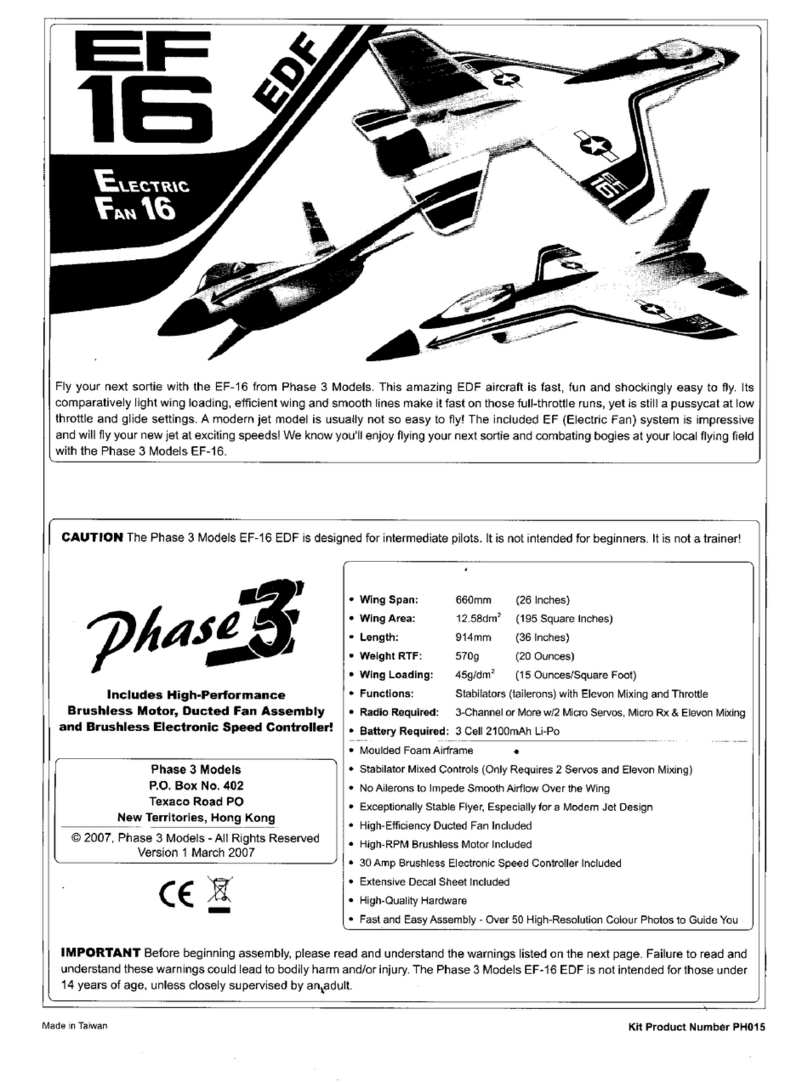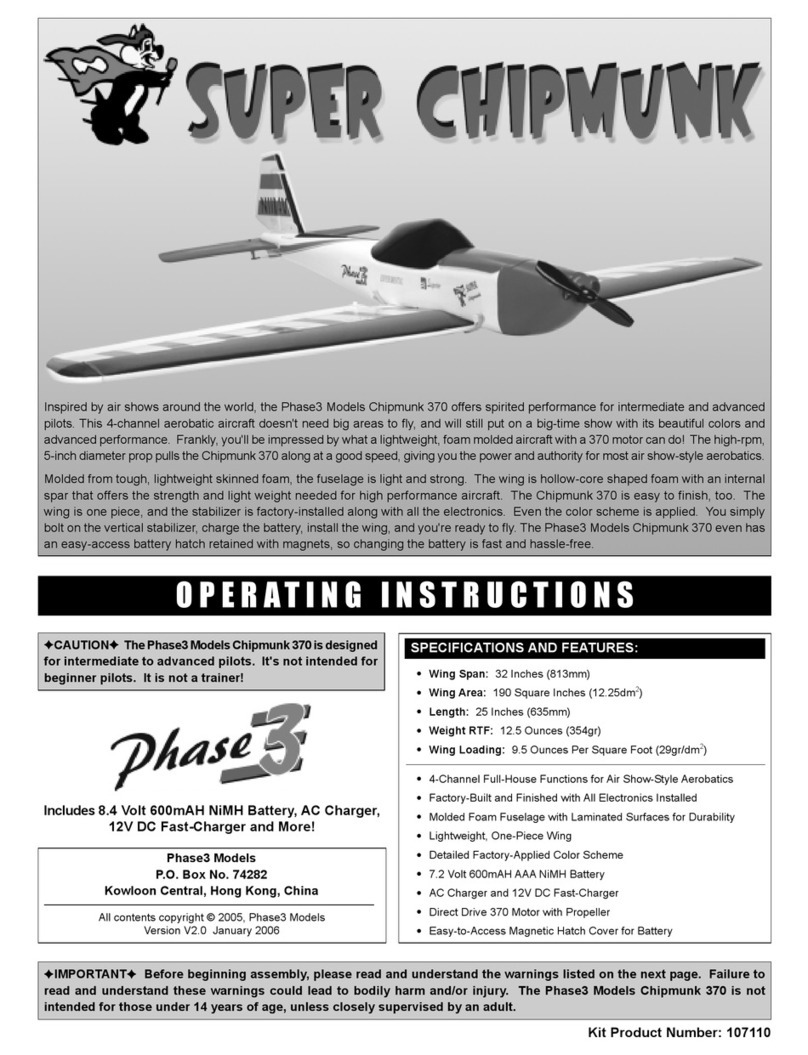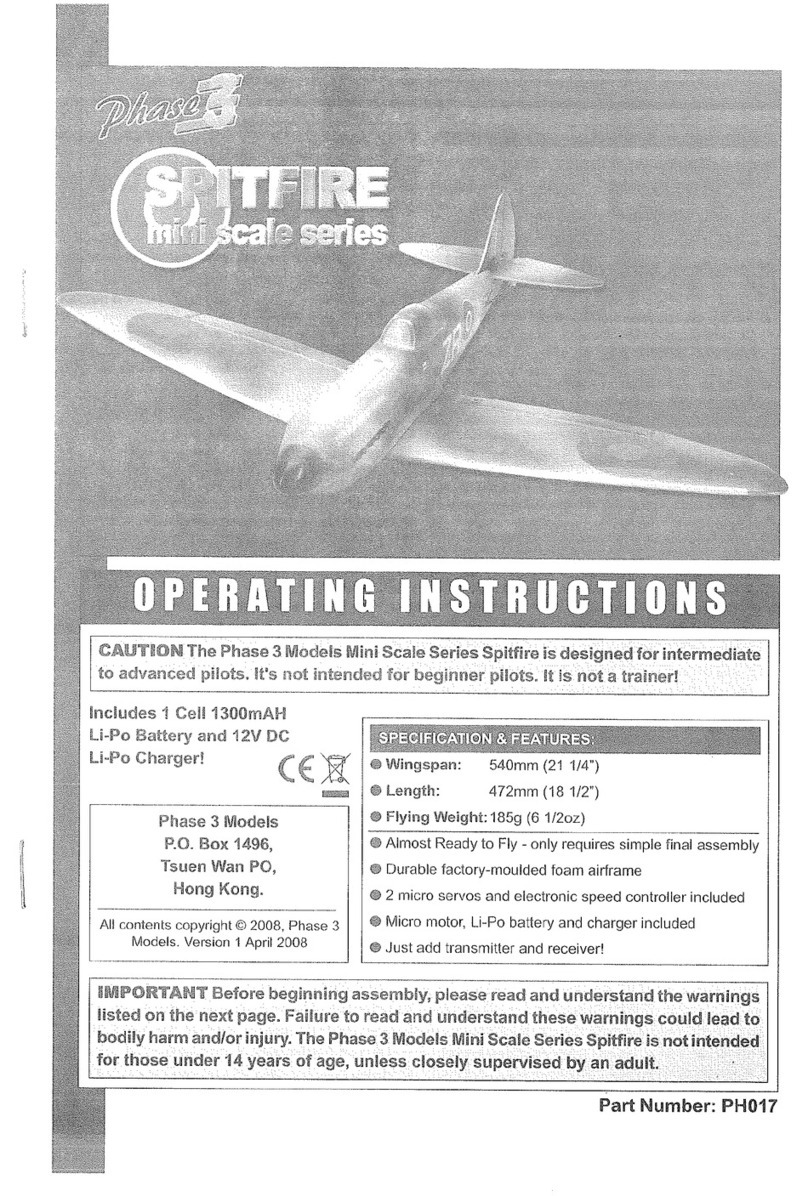
FOR YOUR SAFETY - PLEASE READ AND UNDERSTAND THESE WARNINGS!
GENERAL WARNINGS
RADIO SYSTEM WARNINGS
LITHIUM POLYMER BATTERY WARNINGS
YOU MUST READ THIS BEFORE CHARGING
YOUR BATTERY
INTRODUCTION
Thank you for purchasing the Phase 3
Thank you for purchasing the Phase 3
Thank you for purchasing the Phase 3
Thank you for purchasing the Phase 3
Thank you for purchasing the Phase 3
Thank you for purchasing the Phase 3
Thank you for purchasing the Phase 3
Models Squall! EDF. Before completing
Models Squall! EDF. Before completing
Models Squall! EDF. Before completing
Models Squall! EDF. Before completing
Models Squall! EDF. Before completing
Models Squall! EDF. Before completing
Models Squall! EDF. Before completing
the final assembly of your new aircraft,
the final assembly of your new aircraft,
the final assembly of your new aircraft,
the final assembly of your new aircraft,
the final assembly of your new aircraft,
the final assembly of your new aircraft,
the final assembly of your new aircraft,
please carefully read through this
please carefully read through this
please carefully read through this
please carefully read through this
please carefully read through this
please carefully read through this
please carefully read through this
assembly manual in its entirety. Doing
assembly manual in its entirety. Doing
assembly manual in its entirety. Doing
assembly manual in its entirety. Doing
assembly manual in its entirety. Doing
assembly manual in its entirety. Doing
assembly manual in its entirety. Doing
so will ensure your success the first time around.
so will ensure your success the first time around.
so will ensure your success the first time around.
so will ensure your success the first time around.
so will ensure your success the first time around.
so will ensure your success the first time around.
so will ensure your success the first time around.
Note that the construction method is identical for
Note that the construction method is identical for
Note that the construction method is identical for
Note that the construction method is identical for
Note that the construction method is identical for
Squall! and Squall! HP - only the motor, fan and
Squall! and Squall! HP - only the motor, fan and
Squall! and Squall! HP - only the motor, fan and
Squall! and Squall! HP - only the motor, fan and
Squall! and Squall! HP - only the motor, fan and
ESC differ between the two models. Squall! is for
ESC differ between the two models. Squall! is for
ESC differ between the two models. Squall! is for
3 cell Li-Po batteries and Squall! HP is for 4 cell
3 cell Li-Po batteries and Squall! HP is for 4 cell
3 cell Li-Po batteries and Squall! HP is for 4 cell
Thank you for purchasing the Phase 3
Models Squall! EDF. Before completing
the final assembly of your new aircraft,
please carefully read through this
assembly manual in its entirety. Doing
so will ensure your success the first time around.
so will ensure your success the first time around.
so will ensure your success the first time around.
so will ensure your success the first time around.
so will ensure your success the first time around.
Note that the construction method is identical for
Note that the construction method is identical for
Note that the construction method is identical for
Squall! and Squall! HP - only the motor, fan and
Squall! and Squall! HP - only the motor, fan and
Squall! and Squall! HP - only the motor, fan and
Squall! and Squall! HP - only the motor, fan and
Squall! and Squall! HP - only the motor, fan and
ESC differ between the two models. Squall! is for
ESC differ between the two models. Squall! is for
ESC differ between the two models. Squall! is for
ESC differ between the two models. Squall! is for
ESC differ between the two models. Squall! is for
3 cell Li-Po batteries and Squall! HP is for 4 cell
3 cell Li-Po batteries and Squall! HP is for 4 cell
3 cell Li-Po batteries and Squall! HP is for 4 cell
3 cell Li-Po batteries and Squall! HP is for 4 cell
3 cell Li-Po batteries and Squall! HP is for 4 cell
3 cell Li-Po batteries and Squall! HP is for 4 cell
Check our website for more information
Check our website for more information
Check our website for more information
Check our website for more information
Check our website for more information
on this and other exciting Phase 3 Models!
on this and other exciting Phase 3 Models!
on this and other exciting Phase 3 Models!
on this and other exciting Phase 3 Models!
on this and other exciting Phase 3 Models!






